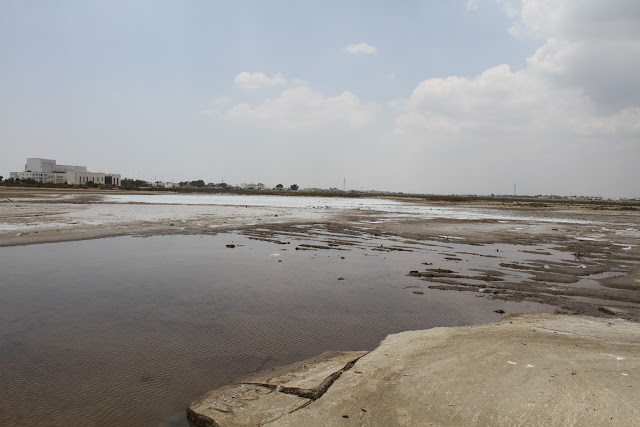24.07.2012
My Turkish-Cypriot friend, Professor Salih Gucel and I explored Cyprus' east coast to look at the Pediaios and other rivers and associated lagoons and wetlands. Around Ammochostos and Salamis I was impressed to see some rather extensive surviving wetland patches. As in many places on Mediterranean islands this area's wetlands are severely degraded and threatened - building, roading, dumping, water pollution from various urban effluents and water abstraction everywhere. In fact I think these are the most vulnerable wetland areas on Cyprus and they definately have an outstanding international interest that remains unrecognized.
Sometimes, discoveries can be made even at a wetland's life last minute...We made a fantastic re-discovery today: a small protected fish species, the Mediterranean Toothcarp, was relocated here. I was told by Dr. Andreas Demetropoulos that a population was known from this general area - but its current status was a total mystery. To be sure, we do not know exactly what species this Toothcarp belongs to. The taxon is usually ascribed to Aphanius fasciatus but its systematics and taxonomy on Cyprus have not been explored. I believe this population is an evolutionary significant relic that needs immediate attention. Here on the east coast, we managed to locate two populations - one at Silver Beach Lagoon, next to Ancient Salamis and another further south behind the subtropical azure beach of Glapsides. The first site is very fragmented and most of the water had evaporated - leaving the entire Aphanius population dead! We estimated over 20 0000 dead fish- a remarkable mass death due their lagoon habitat shrinking away in the summer heat. Aphanius is known to be found only on one more location on Cyprus, at the Akrotiri wetland west of Lemessos. So, here at Ammochostos - at beautiful Famagusta - we report an important conservation priority.
All photos below taken by S.Gucel
 |







